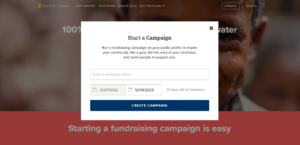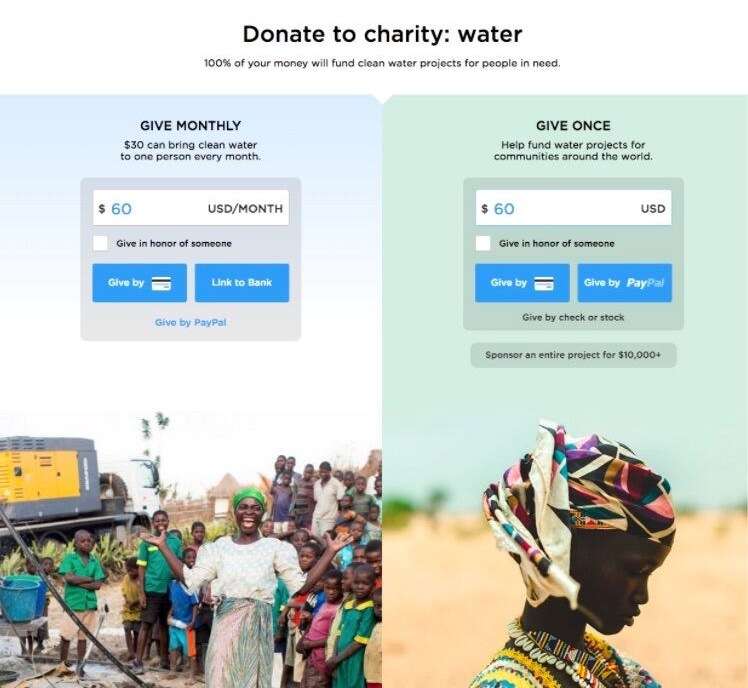Just Released
Using Behavioural Science to increase online donations

With the ongoing cost-of-living crisis, the charity sector can expect to see uncertainty for the rest of 2022.
With that in mind, how do you give yourself an edge?
How can you increase the odds that when someone visits your website, opens a fundraising pack or reads an email, they go on to make that crucial donation?
One answer could lie in the application of Behavioural Science.
What’s Behavioural Science?
Behavioural Science concerns itself with human behaviour, specifically how humans really make decisions in the real-world. We like to think we are rational, logical beings who think every decision through. In reality we are reacting, sometimes subconsciously, to our context, environment and social factors.
We do this because as humans we are faced with an inordinate number of decisions every day, from the trivial to the monumental. To manage that workload, we use mental shortcuts rather than assessing each decision rationally.
How can charities avoid Choice Overload to increase donations?
People tend to presume that more choice is a good thing, however, research has shown that we have a harder time choosing from a larger range of options compared to a smaller number of possibilities.
In a study on the effects of choice on motivation, researchers set up a jam tasting experiment at an upscale supermarket. On some days, they displayed a limited selection of six flavours of jam; on others, they put out a much more extensive assortment of 24 flavours.
Shoppers were then allowed to taste as many jams as they wanted, and were then given a discount voucher for their next jam purchase.
Logically, we might expect that more choice would lead to a higher chance of shoppers finding an option that they liked. However, the opposite was true. Making decisions is cognitively exhausting and, in this experiment, they ended up abandoning the effort of making a choice.
It’s not just supermarket shoppers who experience choice overload. In 2020, JustGiving began asking fundraisers to share their page on social media in email campaigns to increase donations. We tested showing the fundraiser the option to share their JustGiving page on WhatsApp and Facebook, vs. asking them to choose between WhatsApp, Facebook, Twitter and Emai’. We found that asking supporters to choose between just two options (WhatsApp and Facebook), instead of four, drastically increased the number of fundraisers who shared their page.
Simply put, too much choice can lead to no choice at all.
And it’s not just websites and marketing where we see the effects of choice overload. Charities also experience this issue when it comes to donation forms.
Charities invest time and money to get donors to visit their site. A donation form that limits friction and reduces choice helps ensure that investment is met with the best financial return.
The takeaway
Charities could benefit from reviewing their marketing campaigns, website, and checkout to understand what they are asking of their donors and if any of these asks could be reduced.
Here’s two simple things you could try today:
- Sign your charity up for Swiftaid
Swiftaid is a new Gift Aid network that removes the need for donors to complete a Gift Aid form every time they donate. Instead, donors simply need to make one Gift Aid declaration per tax year, which is then shared across the Swiftaid partner network. - Use a Giving checkout donation form on your website and marketing campaigns
Giving Checkout is a donation button, QR code and form powered by JustGiving. It’s 100% free to use (there’s no platform or processing fees) and it’s proven to help charities convert more donations (up to x4.7 more vs industry benchmarks) and raise more money. Here’s a handy 2-minute demo on how it works.
Live example
Reducing choice overload is something that organisations such as Charity Water have been focusing on in recent years. The Charity is responsible for over 155million in fundraising annually and achieved success with a simplified sign-up page. Their new design made it possible for anyone starting a campaign to create a profile and reduced the number of fields a fundraiser had to complete from five to two.
The results?
Subsequent testing has led to an even simpler form, with a single field for the campaign name and a calendar input.

How can charities use Anchoring Bias to increase online donations?
Anchoring is a cognitive bias where people depend heavily on the first piece of information that they see.
This first impression acts as an anchor to which all subsequent and related information is compared. This means that when someone is unsure of the value of something, they’ll make a judgement by choosing an available benchmark and use this information to decide how much to pay.
In an experiment conducted by Daniel Kahneman, a psychologist and economist, participants were told about environmental damage and asked about their willingness to make an annual contribution to save 50,000 offshore seabirds from oil spills.
Three groups of potential donors were asked different anchoring questions:
… “Would you be willing to pay £5?”
… “Would you be willing to pay £400?”
… The final group were not given an amount.
The results were interesting. Those who were not given an anchor in the experiment were willing to pay an average contribution of £64. When the benchmark amount was £5, the average contribution was £20. When the anchor was £400, the average donation was £143.

It is not surprising that people who are asked difficult questions clutch at straws, and the anchor is a plausible straw
- Daniel Kahneman
The takeaway
If suggested amounts are important then how do you decide what to show on your website and campaigns?
- Start by reviewing your data
If your average donation amount is £25, it doesn’t make sense to highlight a donation for £350. It’s important to use realistic amounts, as large, unrealistic numbers may discourage your potential supporters and lower your conversion rate. - Increase the number
If last year’s average donation was £25, it would be a good starting point to suggest donations of £5, £30, and £45. People who want to donate £20 would be more likely to increase their donation to £25 rather than reduce their donation to £5. - Test the amounts
Find out what works best for your cause through A/B testing. Group A see the ‘default’ set of amounts, at the same time Group B see your ‘test’ set, you can then compare the donation amounts of Group A vs B. You don’t have to always test this type of activity on your website’s donation form, you could try it on your email campaigns for example.
Live example
Charity Water experimented with this technique on their donation form by adjusting the default amount. By simply changing the text from “120” to “160”, they increased their average donations without affecting the overall conversion rate.
If you don’t have the internal resource or expertise, then JustGiving’s latest donation tool ‘Giving Checkout’ could be a good option. Giving Checkout allows you to create your own donation form, which you can use on your website and in your marketing campaigns. You can choose donation amounts and prompts that you want to test in minutes.

How can charities use the Identifiable Victim Effect to increase donations?
The Identifiable Victim Effect is the theory that people are more likely to feel compassion and a greater need to help when stories are about a specific, identifiable individual, compared to an anonymous group of victims.
Researchers at Carnegie Mellon University conducted a study to see what sorts of messaging compelled people to support a cause. The participants were given three reasons to donate:
- The story of a girl named Rokia from Mali, who is starving.
- A description of how many children are dying in Mali of starvation.
- Rokia’s story along with statistical information.
It feels illogical for potential donors to feel the urge to help a singular victim compared to a large group of people, as a larger group’s pain is factually worse than a single person’s plight. Logically, the bigger the threat, the more resources and time we should give to reduce the threat, but according to the Identifiable Victim Effect, the opposite is true.
So why do your supporters behave this way? People act because of emotions; they then use logic to rationalise their behaviour. The Identifiable Victim Effect happens because we are not rational thinkers. Our brains have a limited capacity, which makes it difficult for us to feel sympathy for everyone. We become overwhelmed when we feel an emotional response to every tragedy that we hear about. As a result, people are more engaged when reading about the hardship of a singular person and are more likely to shut themselves off when reacting to larger tragedies.
The takeaway
Showing an individual and humanising them by adding name, ages and photographs is a powerful way to invoke action from potential donors. It’s something your charity can certainly test across your website, emails, social and direct mail campaigns.
Live example
The Charity ‘Help for Heroes’ feature Carl’s story in an email campaign. Help for Heroes have transformed the lives of 26,500 individuals since 2007, however this impressive statistic isn’t something they have relied on to show the scale of those affected by war, or how many people they have been able to support.
Instead they share stories of individuals who have been helped by the charity. In this example, they introduce potential donors to Carl’s success story such as Carl, enabling them to connect the dots between their giving and the impact.
Resources used in this guide:
Anchoring Bias:
https://thedecisionlab.com/biases/anchoring-bias
CAF UK Giving Report
https://www.cafonline.org/about-us/publications/2022-publications/uk-giving-report
Choice Overload
https://thedecisionlab.com/biases/choice-overload-bias
Fresh Egg:
https://www.freshegg.co.uk/blog/how-behavioural-science-helps-charities-increase-online-donations
M+R Benchmarks
https://2021.mrbenchmarks.com/uk
Swiftaid:
https://blog.justgiving.com/gift-aid-innovation-justgiving-x-swiftaid
The Identifiable Victim Effect:
https://thedecisionlab.com/biases/identifiable-victim-effect